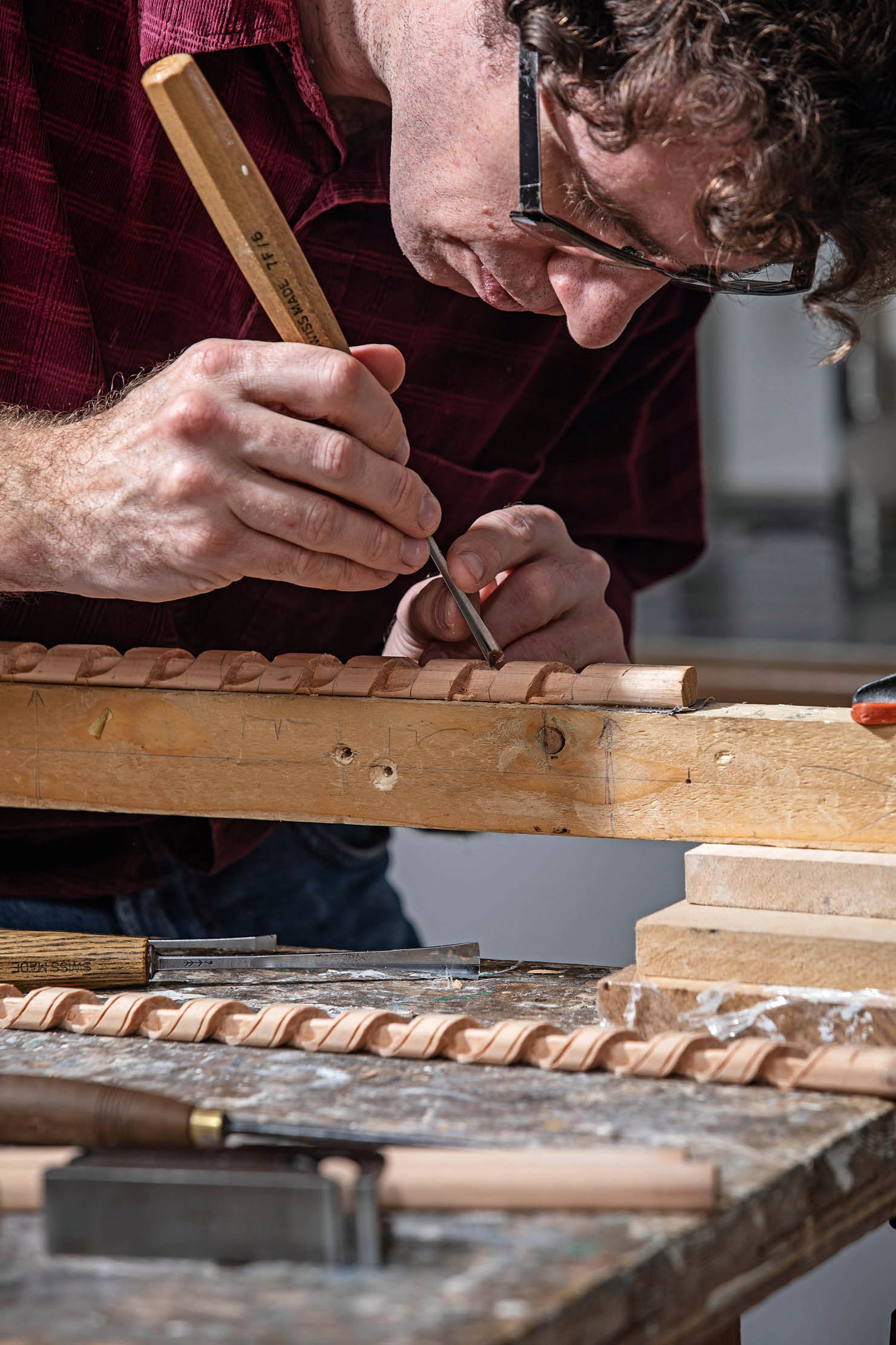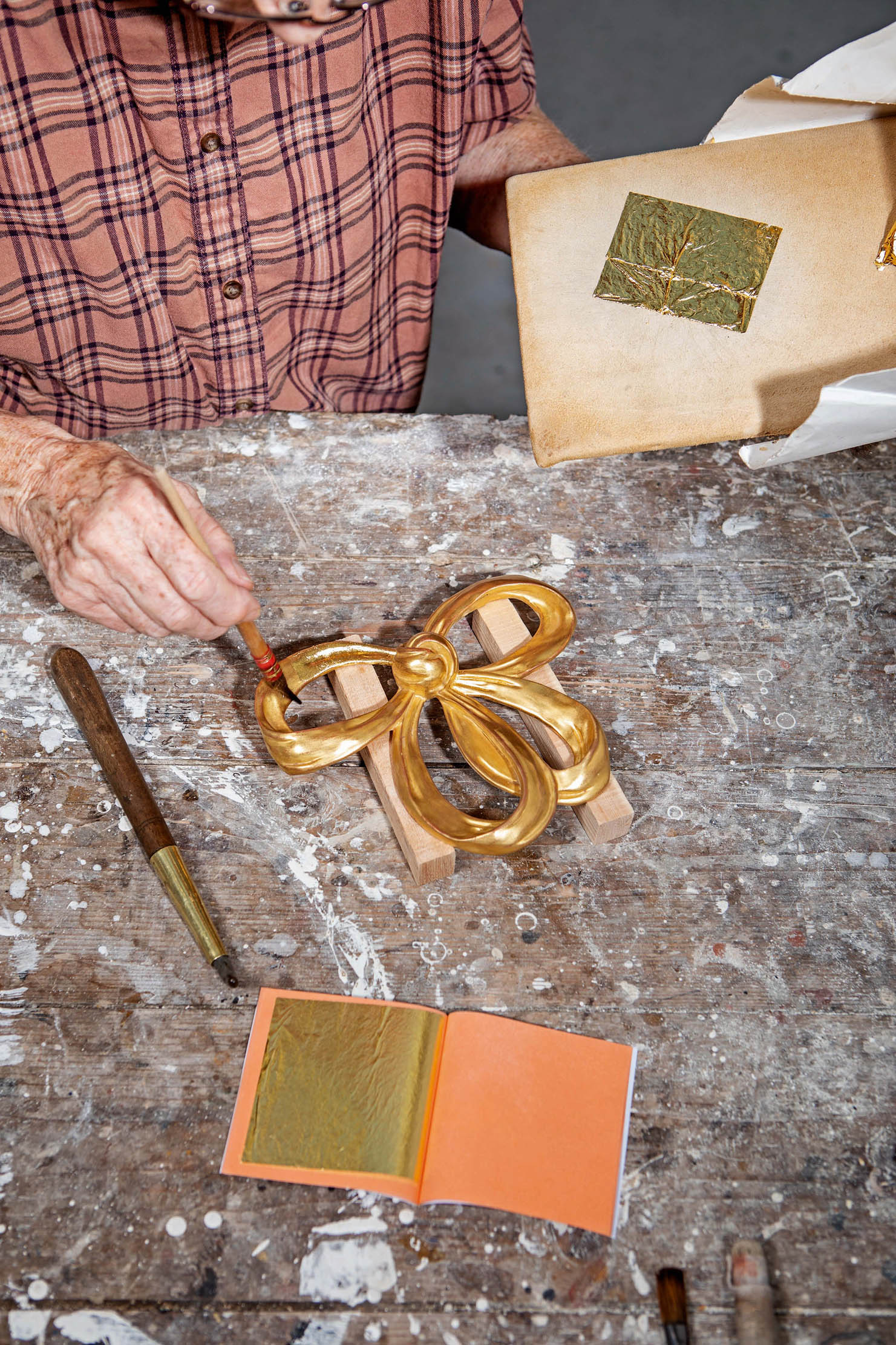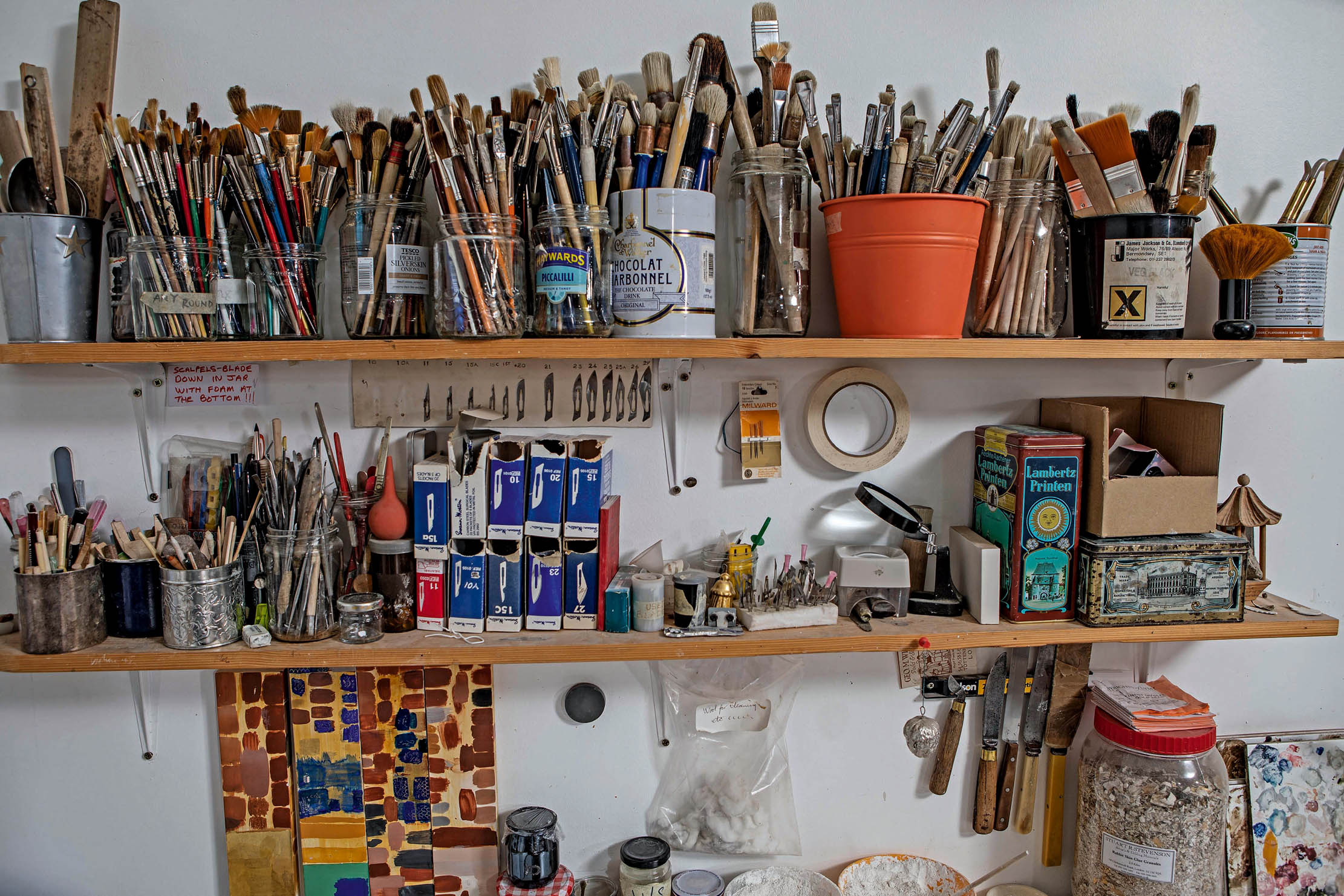The splendour of gilded furniture, and the experts who look after it for generations to come
Little conveys opulence more than gilt furniture, but restoring fading pieces is a challenge that requires exceptional skill, says Catriona Gray. Photographs by Richard Cannon for Country Life.


There’s something wonderfully opulent about gilded furniture. Symbolising good fortune and success, it has adorned the grandest of interiors ever since it was popularised in Europe by Louis XIV in the 17th century, when he built the gleaming palace of Versailles. Almost every surface was embellished and rimed with shining gold leaf — it’s hardly surprising that the French monarch became known as the Sun King. The fashion soon spread across the Channel and the English aristocracy began to decorate their new Palladian-style country houses in a similar style. Even today, plenty of gilt furniture graces Britain’s great homes, from Chatsworth to Waddesdon.
Beautiful as it is, however, it comes with its own set of problems — notably, how to care for it and restore it. Delicately carved and often supremely fragile, gilt furniture ranks among the trickiest of antiques to preserve, requiring an enormous array of skills to stabilise and reconstruct even relatively straightforward items. You need the dexterity of a master wood carver, the analytical ability of a laboratory technician and the steady hand of a specialist gilder, teamed with the inquisitive nature of a detective, to uncover the history of each piece and restore it sensitively.

It’s thus understandable that specialist gilded furniture restorers are extremely few and far between. Outside of institutions such as the National Trust, which retains its own team of experts to collaborate on maintaining its collections, there are very few companies that provide a one-stop restoration service for gilded furniture. One of the busiest is Carvers & Gilders, which was founded in 1979 and, for more than 40 years, has designed, made, conserved and restored fine carving and gilding from its workshops in south London. A long-time Royal Warrant holder, it has an impressive client roster, including Windsor Castle, Berkshire, Hampton Court, in south-west London, Woburn Abbey, Bedfordshire, and Uppark in West Sussex.
Christine Palmer, one of the original founders, still runs the company, together with six other members of staff, including several specialist conservators and carvers. Having earned an art degree in the early 1970s, she became interested in applied techniques, such as carving and gilding, and went on to study at City & Guilds. After a spell at Arnold Wiggins & Sons, which specialises in antique and reproduction picture frames, she worked at the National Gallery’s framing department, before setting up Carvers & Gilders.
‘Gilded furniture is quite a specialised niche,’ she explains. ‘There’s a lot of overlap in technique with picture framing, although the training is even more specific for furniture. I came to it because I became very interested in carved ornament, which characterises that type of furniture. If you look at original antique pieces, the ornament and the carving was done with the finish in mind — whether it’s parcel gilded or painted, oil gilded or water gilded. Master craftsmen didn’t simply carve something and then decide to gild it. It was preconceived.’

A trained eye will be able to identify the age of a piece simply by looking at the style of the carving. In the mid 18th century, for example, furniture was characterised by very bold carving, with not much detail in the wood, covered with a thick layer of gesso — a chalky base used to provide a smooth surface for gilding — onto which finer details were applied. As time went on and gold leaf got progressively thinner, the surfaces it was applied to also had to get finer and smoother, which resulted in more intricate flourishes.
When a piece comes in for restoration, the difficulty often lies in working out what it looked like originally, as historic repairs and ‘improvements’ may have completely annihilated its true form. The gilding might have been painted over, original detailing rubbed away and carved sections lost. A treatment proposal is submitted to the client and, once approved, work might be done by one person or multiple members of the team, depending on the size and the nature of the piece.
Exquisite houses, the beauty of Nature, and how to get the most from your life, straight to your inbox.
‘At Carvers & Gilders, we’ve all got a good knowledge of the different processes involved, so we tend to work on multiple aspects, from carving to gilding and everything in between,’ says Ms Palmer. ‘If you don’t understand the carving, you’re not going to put the gesso on properly and you’re not going to apply the gold correctly or burnish it in the right way.’ Where feasible, original methods and materials are used, to make the restorations as sympathetic and seamless as possible.
One of the company’s most memorable commissions was at Harewood House in West Yorkshire, where the team reconstructed a Chippendale state bed. It had been stored in pieces since the 19th century, so the task of reassembling it was akin to doing an enormous jigsaw puzzle, with sections unearthed from their resting places around the house. ‘We found some acanthus-leaf carving that had been shunted around in a box and gone black and damp, then found a break on a piece elsewhere. Miraculously, when we put the two together, they fitted perfectly. One bit was blackened and almost rotten, and the other part looked as if it had just been gilded.’ After analysis, new sections were carved, original treatments applied and the bed now appears in its former glory and in its proper position in the state bedroom at Harewood House.

Ms Palmer and her team also worked on another Chippendale state bed at Dumfries House, following the timely intervention by The King to prevent the house and its contents being broken up and sold in 2007. As the bed had been altered and changed over the years, their brief was to return it to the original concept, so they carefully carved pieces to replace historic losses and drew new valences based on Chippendale’s original designs.
The team at Carvers & Gilders has even created new pieces of furniture from scratch — one impressive example is a faithful copy of an 18th-century palm mirror by John Vardy, which now sits in splendour in the Palm Room at Spencer House in London, SW1.
Illustrious as some of her commissions are, Ms Palmer is happy to advise clients on the simplest of repairs, with prices starting from a modest £100. If you’re lucky enough to own a piece of gilt furniture, there’s no excuse not to return it to its former, glittering glory.
Country Life is unlike any other magazine: the only glossy weekly on the newsstand and the only magazine that has been guest-edited by His Majesty The King not once, but twice. It is a celebration of modern rural life and all its diverse joys and pleasures — that was first published in Queen Victoria's Diamond Jubilee year. Our eclectic mixture of witty and informative content — from the most up-to-date property news and commentary and a coveted glimpse inside some of the UK's best houses and gardens, to gardening, the arts and interior design, written by experts in their field — still cannot be found in print or online, anywhere else.
